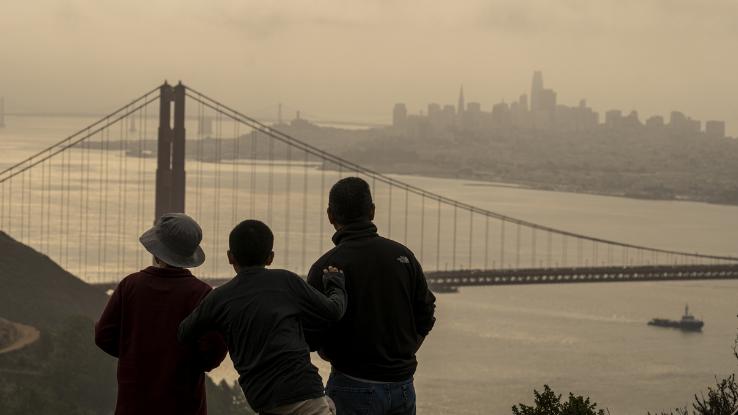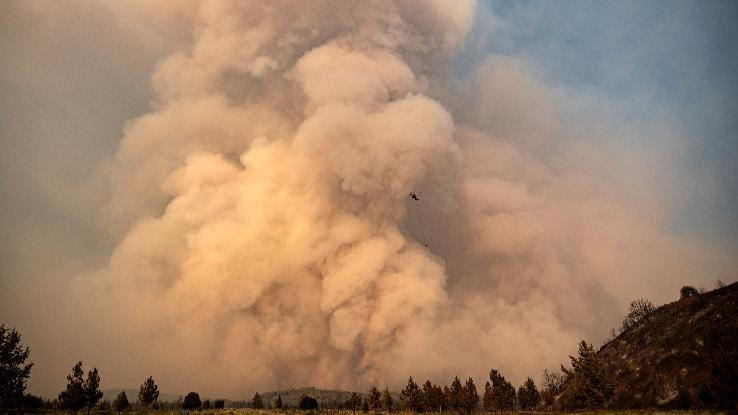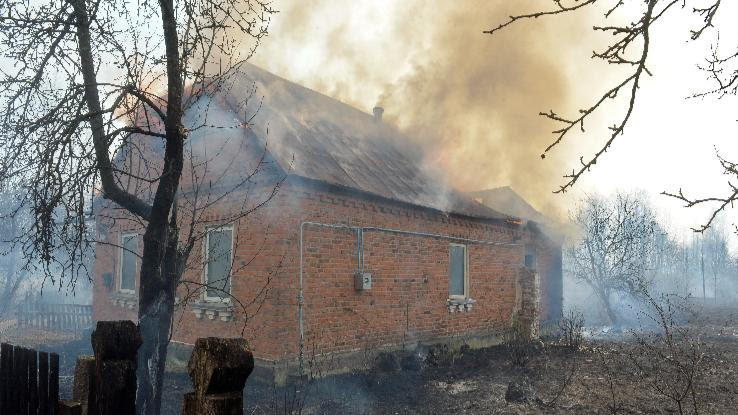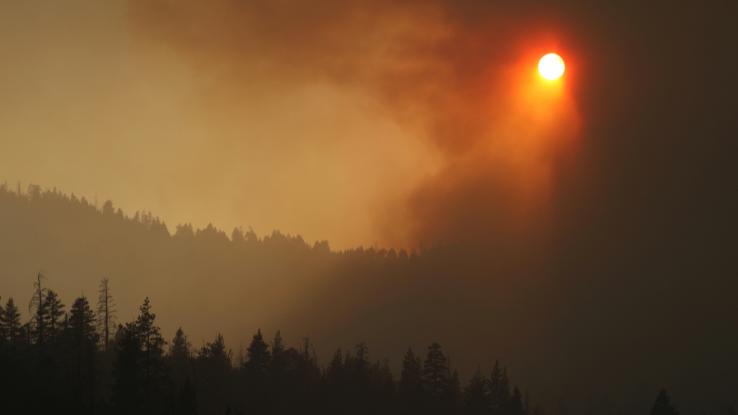
In recent years, the western United States has experienced some of the most destructive wildfires on record. To make matters worse, since 2016 researchers have found that so-called wildfire “seasons” have become longer — and more severe — every year as a result of reduced rainfall and snowpack melt and, of course, climate change.
In addition to the life-threatening flames, the smoke from wildfires can also lead to unhealthy air quality. Not only is this detrimental for folks with pre-existing lung and breathing conditions, but, overtime, breathing air with unhealthy levels of pollutants and particulates can lead to health issues. To protect yourself, there are several steps you can take — and we’ve rounded them up here.
Everything You Need to Know About Wildfire Smoke
While firefighters and others are working to contain wildfires, officials often advise those with close proximity to the fires to evacuate if things become life-threatening. Of course, the need for evacuation can’t always be anticipated in advance. However, if you experience heavy smoke and ash, that’s a surefire signal that you should be prepared to evacuate.

Even those who live further from a fire should be concerned: wildfire smoke can travel a great distance, especially if the wind is severe. Why is inhaling smoke from wildfires so harmful? Well, that smoke is composed of the gases and fine particles that once composed the wood and other organic materials.
If these fine particles get into your eyes and/or respiratory system, you’ll likely feel a burning sensation in your eyes or experience a runny nose. In some cases, you might experience severe illnesses, including bronchitis. These fine particles can also affect chronic heart and lung diseases, and, in turn, can lead to premature death for folks who live with these conditions.
Who Is at Risk?
Wildfire smoke and poor air quality conditions are harmful to all of us, but some folks are more at risk than others. For example, individuals with heart or lung disease, asthma, or diabetes may experience more severe reactions when inhaling these fine particles. Other at-risk groups include older adults with an increased risk of heart and lung diseases; children whose airways are still developing; and people who are pregnant. However, it bears repeating that we should all remain vigilant when it comes to avoiding smoke inhalation.
How Does Wildfire Smoke Enter Your Home?
You can be affected by wildfire smoke both outdoors and indoors. You might think you’re safe from poor air quality while indoors, but you might still be inhaling harmful particles, namely because smoke can enter your home. Most commonly this happens if windows or doors are left open, which, of course, can be remedied.

However, there are some elements that are out of your control. For example, bathroom and kitchen fans that vent outside, or heating, ventilation and air conditioning (HVAC) setups, can all allow smoke to enter. The same is true when it comes to closed doors and windows, especially if they don’t have a tight seal. No matter the small opening, crack, or joint, smoke will find a way in.
How bad the smoke gets in and around your home depends on your proximity to the wildfire. Of course, the density of the fire and wind conditions can also play into the severity of smoke in your area. Be sure to monitor any nearby fires and take precautions ahead of time when possible.
How Can You Protect Your Health?
Wildfires are unpredictable and, therefore, a cause for great concern. However, there are a few measures you can take to protect your health when it comes to harmful smoke and poor air quality. Be sure to do the following:
- Check daily air quality reports and forecasts for your area: Pay attention to any health warnings concerning smoke. The forecasts will also notify you when the air is unhealthy. Find reports on airnow.gov to stay up-to-date on the current health advisories.
- Consult your community’s visibility guides: Many communities, especially in the western United States, have monitors measuring the number of fine particles in the air. Use a visibility guide to determine if the level of particles is dangerous for your health.
- Avoid exercising outdoors: When air quality and pollution levels are high, it’s dangerous to exercise outdoors. Instead, walk indoors at a local shopping mall or visit an indoor gym. In addition, limit how much time children spend playing outdoors.
- Avoid exercising near high-traffic areas: Even when there isn’t an active wildfire, it is best to avoid exercising on highways or near other busy traffic locations. Vehicles on highways create high pollution levels that could later cause severe breathing problems.
- Keep the indoor air clean by using less energy: When you generate electricity, this creates more air pollution. In addition, keep windows and doors closed. Use an air conditioner instead of letting outdoor air in that might allow smoke and ash to enter your home. Finally, avoid other activities that increase indoor pollution, including burning candles, fireplaces, or gas stoves. Vacuuming also stirs up fine particles.
- Use an air purifier: An air purifier can do wonders for your home’s air quality, especially if discover that excess smoke is entering your house or apartment due to poor seals, HVAC equipment or cracks. Additionally, don’t add to the poor air quality; avoid burning candles or smoking indoors.

- Help prevent wildfires from starting in the first place: When camping, prepare, build, maintain, and extinguish campfires before leaving the campground. If you are burning wood or trash, follow your community’s regulations. Always check the weather and your local fire department to be sure it is a safe time for burning.
- Consult a medical professional for guidance: Follow your doctor’s advice about a respiratory management plan if you suffer from respiratory illnesses, including asthma or lung and heart disease. If you have trouble breathing, evacuate the area immediately. If your symptoms worsen during the events of the wildfire, consult your physician.
- If you are pregnant during a wildfire, know the signs of early labor: Continue your prenatal care as recommended by your doctor. If you notice any signs of labor, call your doctor and go to the hospital as soon as possible while you can still evacuate.
- Find the right kind of mask: Due to the ongoing COVID-19 pandemic, you might have a cloth or surgical mask handy at all times. However, these types of masks, and dust masks you might find at your local hardware store, aren’t going to help much. These types of masks are designed to trap particles, like sawdust, and, therefore, won’t help when it comes to smoke inhalation. Instead, look into N95 masks, which have filters, or respirators. In both of these cases, knowing how to properly wear these masks is essential before use.
- Follow the news and be prepared to evacuate once an order is issued: Follow the instructions from your local authorities about when and where to evacuate. Be sure to bring just the essentials.
The bottom line? Pay careful attention if you live in an area affected by wildfires and poor air quality levels.
Resource Links:
- “Are wildfires really getting worse?” via IQAir
- “Climate Change Is Revealing a Lack of Infrastructure & Preparedness — & It Isn’t Funny” via Reference
- “How to Make an Emergency Preparedness Plan for Your Household” via Reference
- “What’s the Difference Between KN95 and N95 Masks?” via Ask
- U.S. Air Quality Index via AirNow.gov





